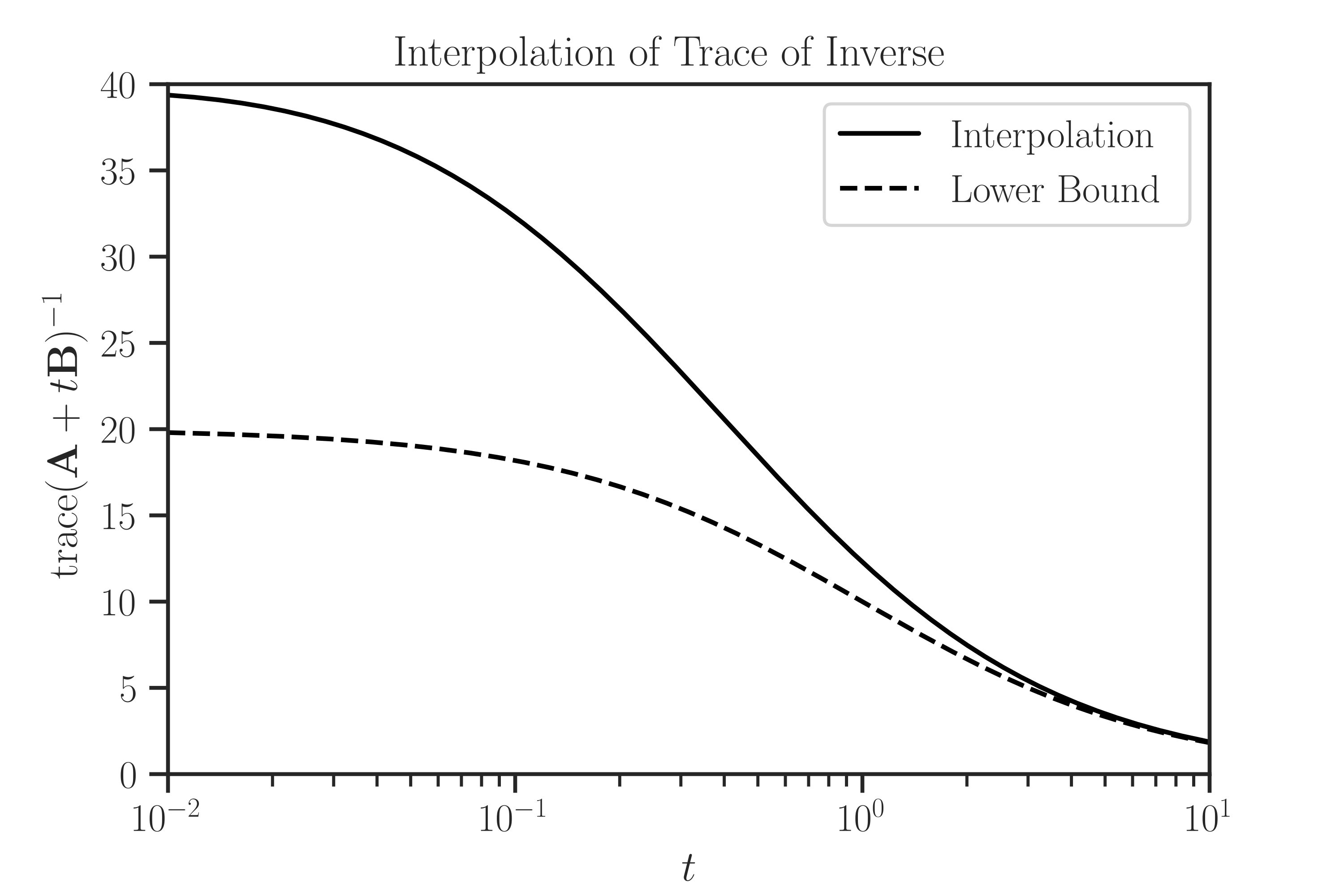imate.InterpolateTrace.lower_bound#
- InterpolateTrace.lower_bound(t)#
Upper bound of the interpolation function.
Note
This function only applies to \(p=-1\).
- Parameters:
- tfloat or numpy.array
An inquiry point or an array of inquiry points.
- Returns:
- ubfloat or numpy.array
Upper bound. If t is an array, the output is also an array of the size of t.
- Raises:
- ValueError
If \(p \neq -1\).
See also
Notes
A lower bound function for \(\mathrm{trace} (\mathbf{A} + t \mathbf{B})^p\) is
\[\mathrm{trace}((\mathbf{A}+t\mathbf{B})^{-1}) \geq \frac{n^2}{\mathrm{trace}(\mathbf{A}) + t \, \mathrm{trace}(\mathbf{B})}\]Note that the above bound is not sharp as \(t \to 0\).
References
[1]Ameli, S., and Shadden. S. C. (2022). Interpolating Log-Determinant and Trace of the Powers of Matrix \(\mathbf{A} + t \mathbf{B}\). Statistics and Computing 32, 108. https://doi.org/10.1007/s11222-022-10173-4.
Examples
Create an interpolator object \(f\) using four interpolant points \(t_i\):
>>> # Generate sample matrices (symmetric positive-definite) >>> from imate.sample_matrices import correlation_matrix >>> A = correlation_matrix(size=20, scale=1e-1) >>> B = correlation_matrix(size=20, scale=2e-2) >>> # Initialize interpolator object >>> from imate import InterpolateTrace >>> ti = [1e-2, 1e-1, 1, 1e1] >>> f = InterpolateTrace(A, B, p=-1, ti=ti)
Create an array t and evaluate upper bound on t. Also, interpolate the function \(f\) on the array t.
>>> # Interpolate at an array of points >>> import numpy >>> t = numpy.logspace(-2, 1, 1000) >>> lb = f.lower_bound(t) >>> interp = f.interpolate(t)
Plot the results:
>>> import matplotlib.pyplot as plt >>> # Plot settings (optional) >>> from imate._utilities import set_custom_theme >>> set_custom_theme(font_scale=1.15) >>> plt.semilogx(t, interp, color='black', label='Interpolation') >>> plt.semilogx(t, lb, '--', color='black', label='Lower bound') >>> plt.xlim([t[0], t[-1]]) >>> plt.ylim([0, 10]) >>> plt.xlabel('$t$') >>> plt.ylabel('$\mathrm{trace}(\mathbf{A}+t\mathbf{B})^{-1}$') >>> plt.title('Interpolation of Trace of Inverse') >>> plt.legend() >>> plt.show()
